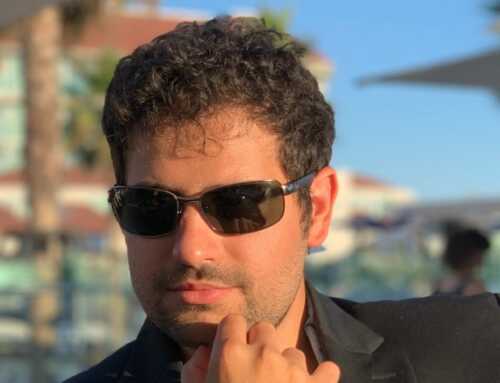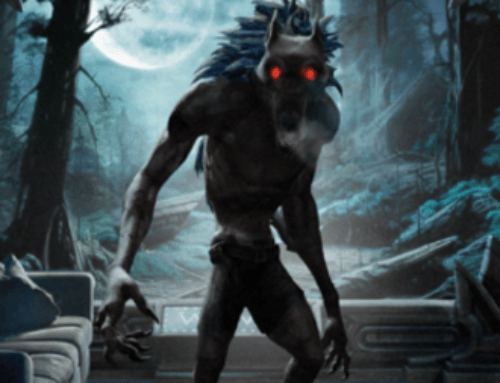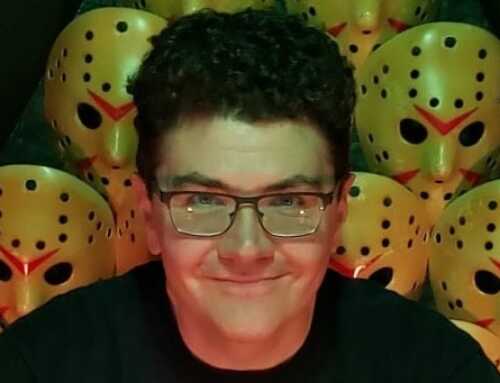We like The Void here at HorrorBuzz. From the family-friendly fun of Ghostbusters to the “oh lord, please make it stop” terror of Nicodemus: Demon of Evanishment, every experience they’ve released seems to improve on the last and I’ve wondered where they could possibly go from here.
Well, wonder no more, because I just had the opportunity to interview Co-Founder and CCO of The Void, Curtis Hickman, who shared his insight into where the industry is now and where it might be headed in the coming years.
HB: Let’s start from the beginning. The first prototypes of what would become The Void started in late 2015-2016 with the Oculus Rift Development Kit 2. Take us through the journey of where you’ve come since then and what are your thoughts on the state of VR in 2019?
Hickman: The very first version of what became The Void was on the DK1. That was the very early stages of The Void. We quickly then moved to the DK2 as soon as it became available and our very first experience, Ghostbusters, launched with the DK2 because the Rift wasn’t out in time for the launch of our first experience. The Void was kind of on the edge of the resurgence of VR. We continue to look at the technology and the way VR is progressing.
Here in 2019, I think about how it was in the beginning with everything so rushed in development and it was really cruising. As VR has shaken out a little more, it’s stabilized and found its place. Development is at a much more even pace, which makes sense but of course, I personally would prefer the more rapid development we saw in the early days. Being a huge fan I know how powerful the medium can be.
HB: VR is notoriously hard to market since you can’t fundamentally show people what you’re offering without getting them to come and do it. How have you tried to tackle the challenges there not only for consumers but content producers and investors as well?
Hickman: It’s one of those things that is best understood by seeing it. I often refer to it as the “unimagined color.” If a color existed that you had never seen before, it wouldn’t matter how much someone tried to describe it to you, you would have to see it for yourself. The Void is much the same way, which is a bit ironic because all we’re trying to do is replicate reality, in our case impossible reality. It’s a simple concept, you live reality every day of your life, how hard can it be to say “when you come to The Void, you’re just visiting another version of reality?”
It seems simple but to really get across to people that we mean that, that it’s not just hype. But there is so much noise in the marketplace, so many competing services trying to do the same thing, that it’s hard to get that message across. We’ve done a lot; in the early days we went to TED and would show anyone we could and with investors, it’s a lot about getting people to experience this for themselves so they can see what it’s all about. Not just the VR side but also the augmented side to make it as hyper-real as possible. When you do that people tend to grasp things pretty quickly. So the challenge is getting the medium out there and getting people to see it for themselves. Just continuing to hammer that message that this is an impossible reality. You’re going to step into another world, in many cases some of your favorite worlds, and it will feel like you’re there in a way you’ve never experienced before. Just go try it.
HB: In many of your previous experiences we’ve seen more cooperative play with some puzzle-solving elements. With Ralph Breaks VR, it seems like you shifted to a more competitive experience. What other forms of gameplay are you looking into and might we see scaling this up to larger venues?
Hickman: We’re doing a lot of exploration right now in that area. We’re exploring longer experiences, bigger experiences that are more competitive in nature. Ralph was a good opportunity for that since Wreck-It Ralph is by its nature, a game, so it made sense that there was a competitive element so that it felt more true to the brand and true to the world.
With The Void, the rule of thumb is “what would the world be like if you were going to step into it?” In Star Wars, it isn’t a video game, it’s a galaxy long, long ago. You’re on a team and you’re going to go on an adventure as if you were in a movie. So we look at each property and what it’s doing and try to stay true to that premise. We talk about our guests as travelers who are traveling to another dimension. We refer to our locations as terminals and think of these as trips they are accessing via these portals. It’s very important to us that we make VR as real as we can, including the story and how you get into that. That’s the core premise of The Void but as we move forward we’re looking to expand that. What would it mean if you went to another reality that was a video game? Then yeah, it would be point-based and competitive and you could go around shooting everything, having a great time in that reality. There’s a lot of exploration around that, that I think is key to The Void’s future.
HB: So the idea is more to decide what makes sense for the world and to build the gameplay around that rather than the other way around?
Hickman: We never look at it as “what type of game is this going to be?” The word “game” is sort of a no-no around here. We look at it from the perspective of, “what experiences do I expect to have as a Ghostbuster?” I’d love to get slimed by Slimer, to capture a ghost, and to have a proton pack I can blow stuff up with and cross the streams. We look at those things as moments of wish fulfillment and then try to make an experience that stays true to those beats. How can we make that as real as possible and how can the story we’re telling with those elements be compelling?
HB: One of the things we focus on at HorrorBuzz is immersive theater, so I have to ask, what have you looked into regarding incorporating live performance and interaction with characters outside of your party?
Hickman: We’re looking at some very cool things right now. I’ll never forget going through Ralph Breaks VR with my daughter and we get halfway through and she starts saying, “Ralph! Hey Ralph!” and Ralph’s just over there doing his thing. We get to the end and one more time she calls out, “Ralph, over here!” As we’re going to leave she turns to me and asks, “Daddy, why didn’t Ralph say hi to me?” I tell her we’re going to get there but it’s kind of breaking my heart. She was helping us as part of our testing and it was amazing how immersed she was in that world but things didn’t respond quite as she expects them to. So we’re actively exploring technology right now to make those worlds and characters much more interactive. We’ll be announcing more on that in the near future.
HB: What sort of fields have you explored for The Void outside of the realm of pure entertainment?
Hickman: Our primary focus right now is entertainment but we have done several experiments with education and with training. We’ve had researchers and branches of the military come in and look at what we’re doing, so we see a lot of potential there. It’s taking the core components of VR and taking that past just your eyes and figuring out how to incorporate your other senses to increase the level of realism. Once you do that, you create a platform that’s conducive to all these sorts of things. We’ve definitely looked a lot into that space. We’re focused on entertainment at the moment but we have a lot of ambitions for that in the future.
HB: We’ve seen a lot of interesting developments recently with VR hardware. The new Vive Pro Eye will introduce eye-tracking and the Pimax has significantly increased field-of-view to around 170-degrees. Can you announce anything hardware-related coming down the pipeline for The Void? I assume it’s not an arbitrary thing to update all your systems.
Hickman: It’s definitely not arbitrary to update the systems. It takes a lot of work and a lot of money but we’re dedicated to having the best VR possible all-around. There were a lot of roads we could have gone down with something like the Oculus Go but we’d have to limit the graphical performance in order to make it work. And while I love the Go and other systems, they just couldn’t supply the graphical quality we, or our IP partners, desired. We try to create and fulfill the Void promise that if you’re going to be somewhere else you want that place to look as real as possible and we’re using the best technology we can to make it happen.
I’m personally very excited about eye-tracking and all the potential there. It’s one of those things that once it’s ubiquitous in VR, once it’s everywhere, people will wonder how we ever got by without it. It’s a real game-changer for VR and as it comes about we’ll take advantage of that. Performance and graphics cards are things that we’ve been updating as we’ve moved forward, we just don’t talk about it. Obviously, since Ghostbusters we’ve made huge changes to our hardware and software changes are something we continuously do to maintain our place in the market. I generally don’t get into specifics, especially about stuff we’re about to come out with, because sometimes those things change at the last minute. So I can’t promise exactly what we’re up to but we’re dedicated to the latest hardware.
I do think wide field-of-view is important, not just the horizontal but also the vertical. It’s been shown the wider it gets the more immersive the experience is. One of the things that really drove Oculus in the first place was that they had the wide field-of-view at a low price point, those two things were needed. That’s one of the things I want to see continue to be improved. I wouldn’t stop at 170, it should be all-encompassing.
HB: What are your goals in terms of expansion? Are we at a point where will start to see neighborhood VR arcades or will it be limited to the major cities for the foreseeable future? How do you choose a location to expand to?
Hickman: One of the things we’ve really tried to do is test and look at different locations to see what works well. Because it is a different form of entertainment from what people are used to. So we made some interesting choices. What happens if we make this part of a movie theater? We have Cinemark locations and have looked at how that’s received. So I think we’ve really zeroed in on a good model for that going forward and we’ve learned a lot about good locations versus great locations.
As a broader answer to the question, the future of The Void is expansion, getting this to be something you don’t have to get into an airplane to visit. Naturally, that starts in larger cities and there are a lot of those to go around that we aren’t in yet. But that is the plan of The Void, to make that accessible to everyone and I’m going to continue to help make sure that happens because it’s great. It’s what VR was always meant to be and I believe in that future of entertainment, the complete and utter immersion in your favorite stories and worlds in a way that has never been possible until now.







